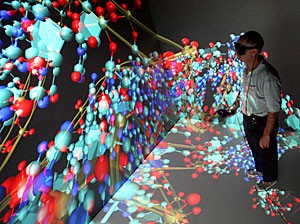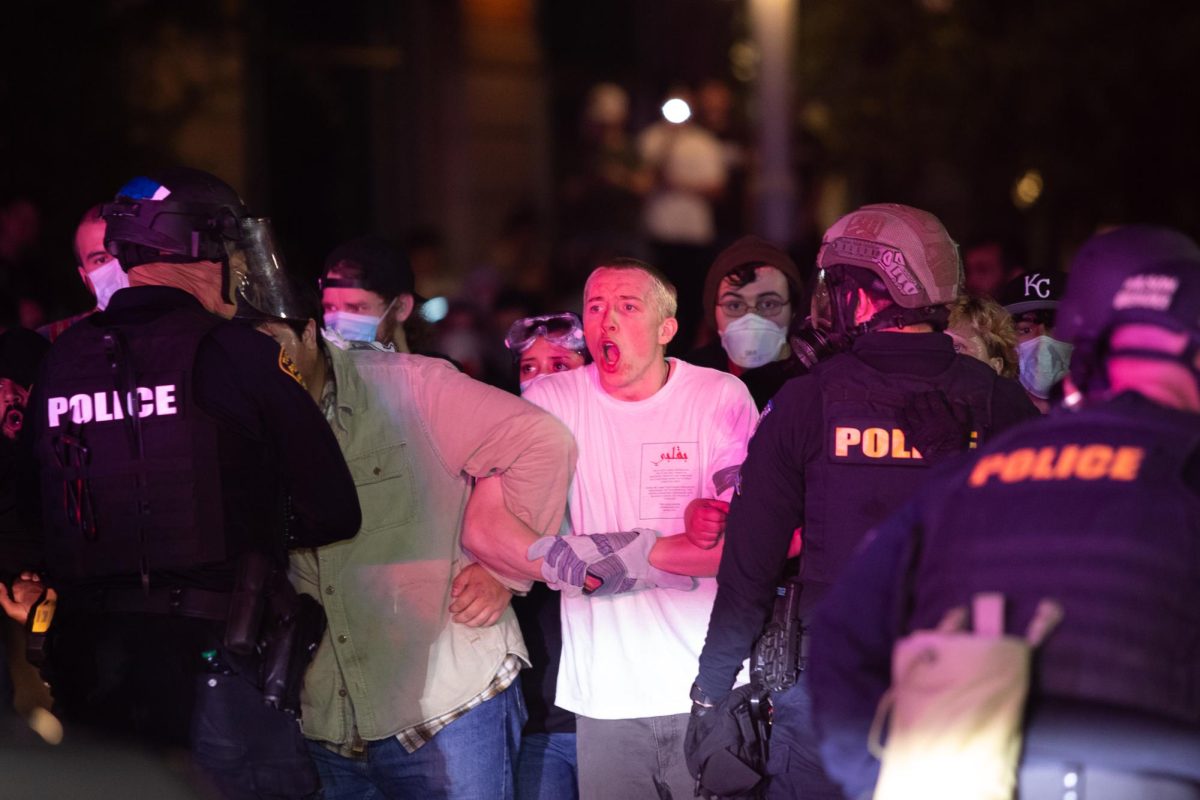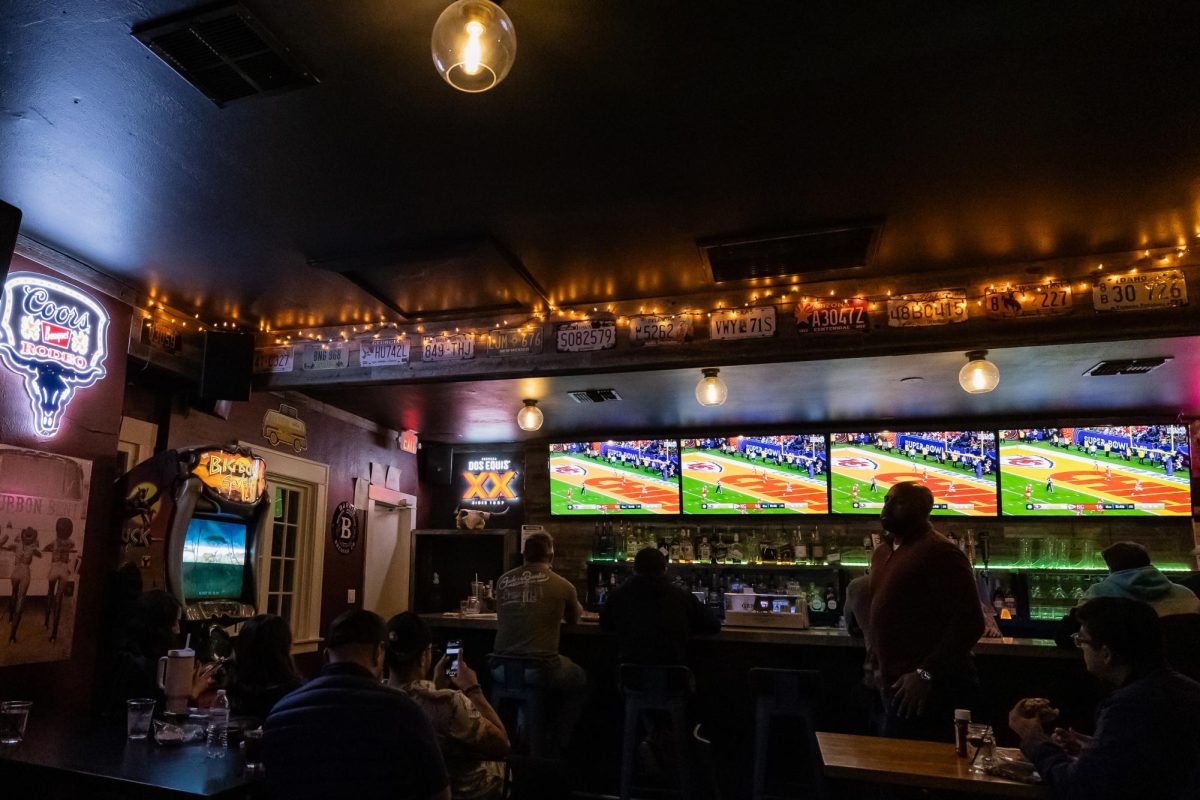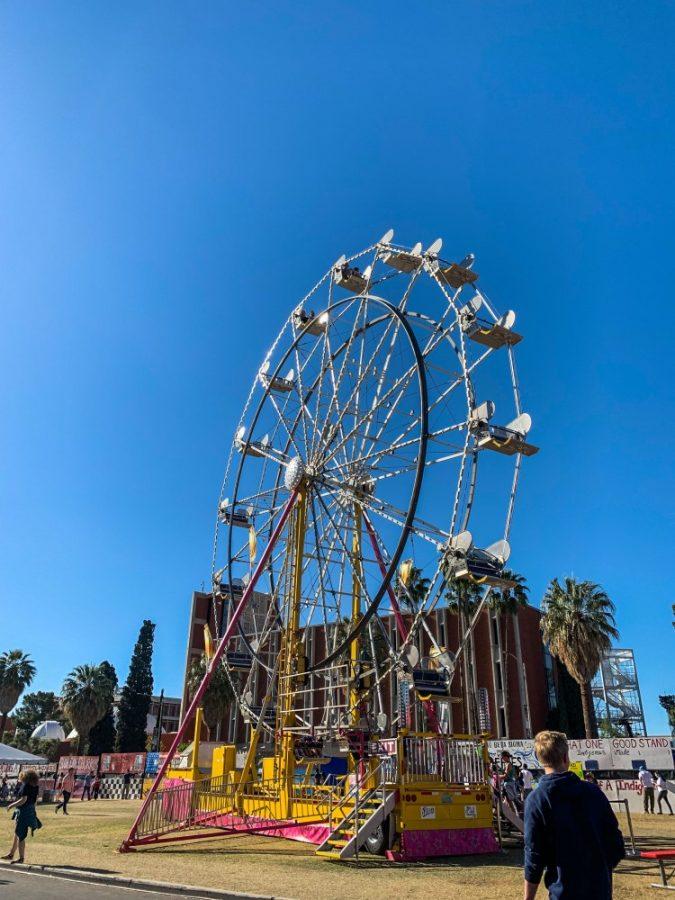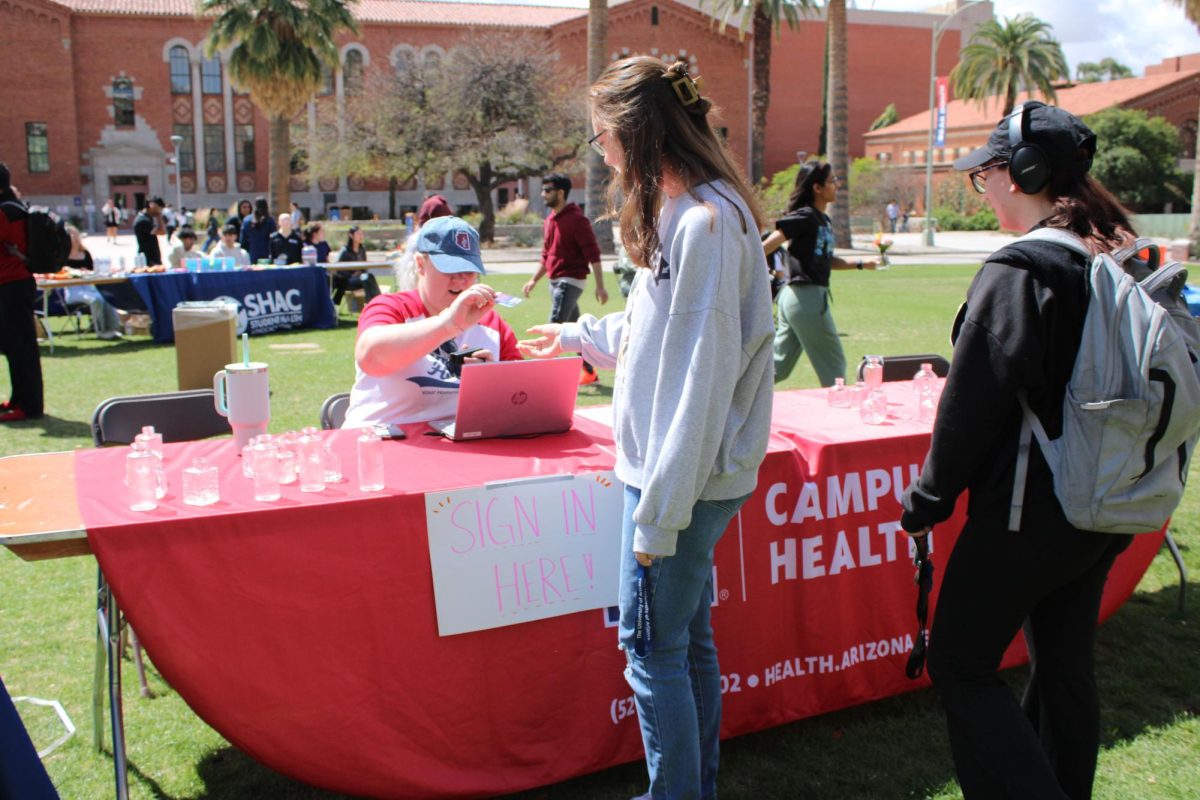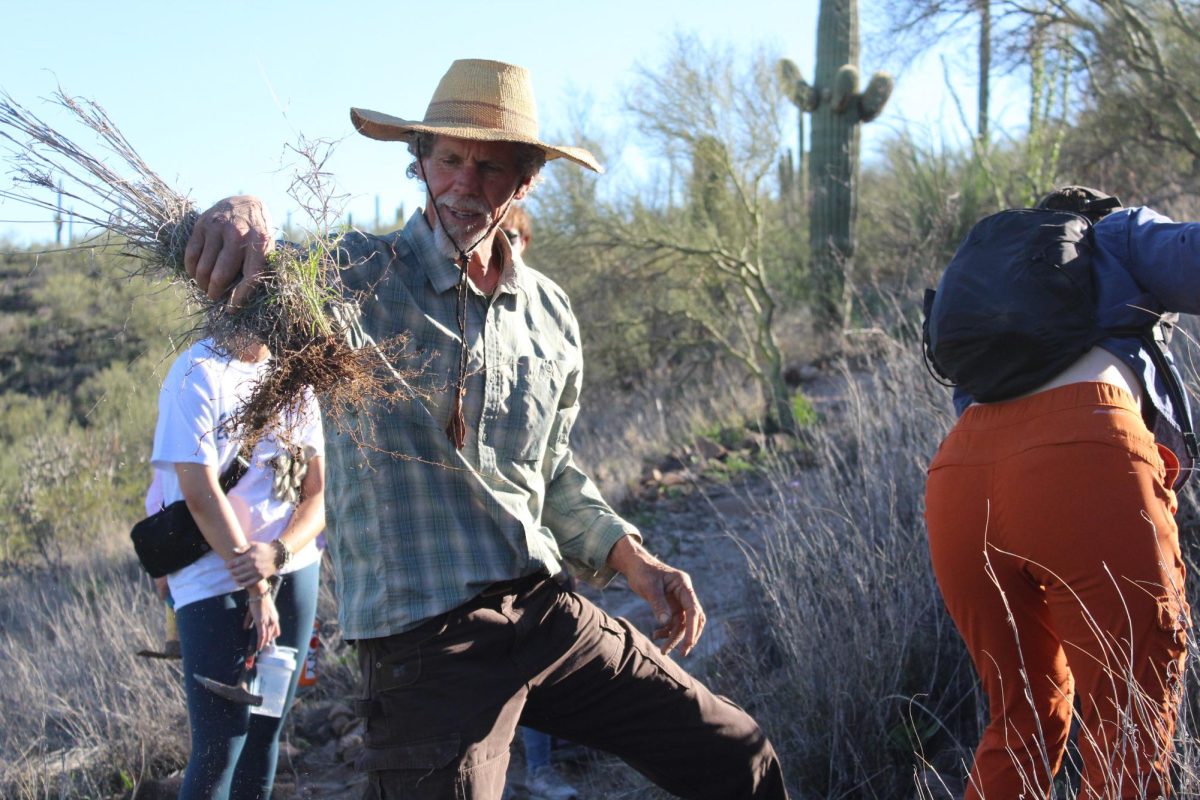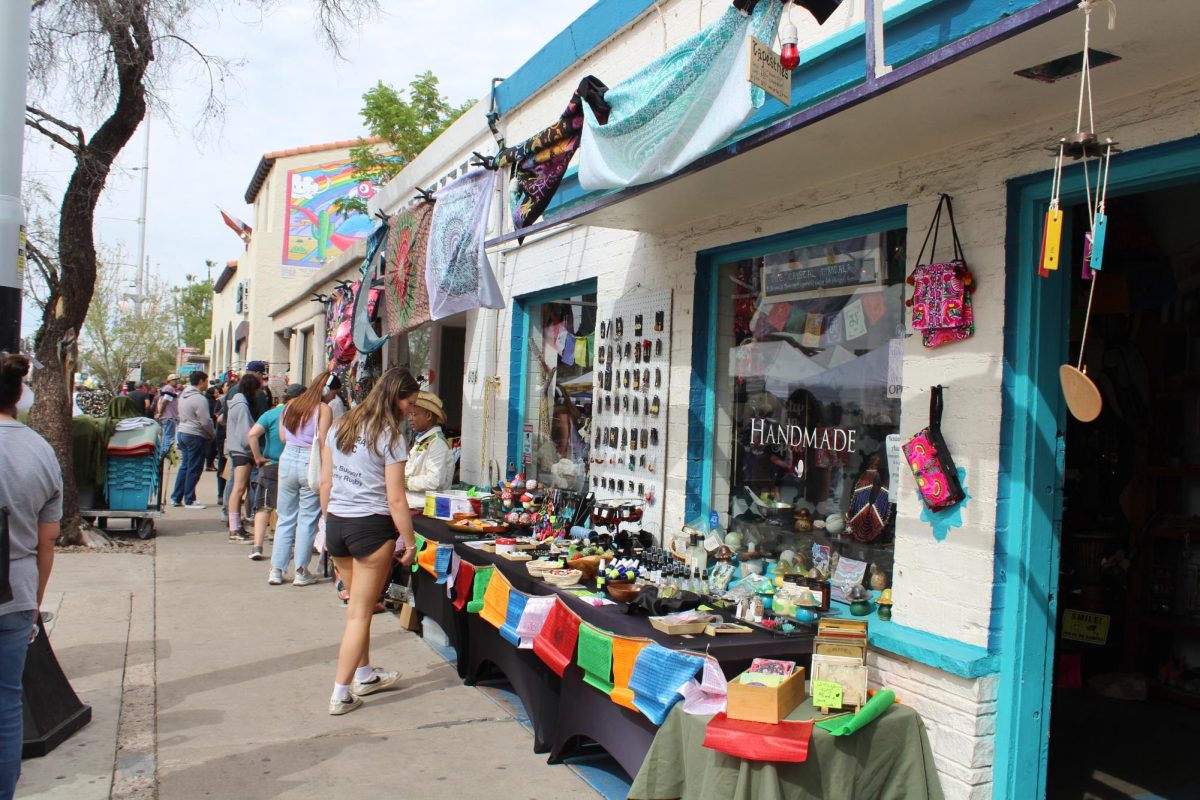Virtual reality technology is moving research and art at the UA into the future.
AZ-LIVE, or Arizona Laboratory for Immersive Visualization Environments, allows UA professors to use virtual reality technology in research and modeling.
AZ-LIVE was built in 2005 using approximately $400,000 from Proposition 301, also known as the technology and research initiative fund, said Marvin Landis, AZ-LIVE coordinator.
Departments utilizing the technology include chemistry, architecture, atmospheric sciences, engineering, classics and media arts.
The UA’s laboratory consists of three projection walls and a floor projection, which allow the user to be surrounded by images. The walls are mobile so the technology can surround larger or smaller groups. Sound can also be added to a virtual reality scene, Landis said.
Landis estimated there are 30 to 35 other immersive labs in the United States, but only 15 to 16 are as advanced as the UA’s facility.
ASU, for example, has a cylinder-shaped virtual reality laboratory.
AZ-LIVE is also interactive. Users can perform a “”fly-by”” of their virtual world and can move through the 3D space they’ve created using a wand.
“”When they do the fly-overs I get really sick,”” said David Soren, a regents’ professor of classics. “”I’ve actually had to sit down a number of times, it’s been so real.””
Soren used the technology to re-create an ancient Roman spa circa A.D. 116, believed to have been used by Emperor Augustus.
“”It’s just so vital as a research tool,”” Soren said, noting that he can access all the information he needs without having to fly to Italy.
Soren uses the virtual model not only for research but also as a method for fund-raising for the excavation of the actual site, located in the modern-day town Chianciano, in the southern Tuscan region of Italy.
As a result of leading prospective donors through the virtual site, thousands of dollars in grants and private contributions for the excavation of the spa have been raised in the past few weeks, Soren said.
Another UA department taking advantage of the technology is media arts.
Lucy Petrovich, an artist in residence and research fellow at the College of Fine Arts, has used the technology to create a virtual work of art titled “”Desert Views, Desert Deaths.””
The work is intended as a memorial for those who have died of heat exhaustion and dehydration crossing the desert near the U.S.-Mexico border.
Petrovich said she uses virtual reality technology as a way to get viewers to enter the art itself and perceive the work their own way.
“”I created the ‘Desert Views, Desert Deaths’ not as a virtual reality but more as a virtual un-reality in the sense that I manipulate images and create a new virtual reality for people to interact with,”” Petrovich said of her work.
In addition to her piece, Petrovich teaches a class that allows undergraduate and graduate students to use the technology to create works of virtual art.
Students learn basic programming of the technology and incorporate images of other art they have created to produce a group project, Petrovich said.
In the fall, the nine students who took the class produced a work called “”Misconceptions”” that explored the cultural identity of each student using interactive, virtual reality technology.
The number of departments using the technology has been steadily increasing in the past two years.
In the future, AZ-LIVE hopes to have computer science students team up with different departments on campus to expand the use of the facility, Landis said.
“”It’s definitely a way to get more insight into your data than just looking at it on your desktop,”” Landis said.



